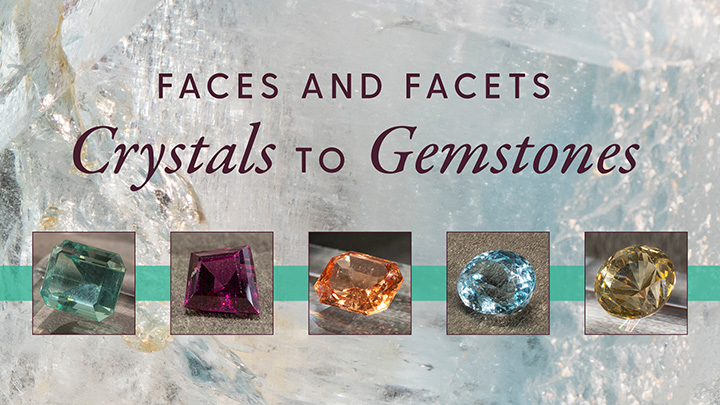About This Exhibition:
The Mineralogical Museum in Penny Hall is open Tuesday through Saturday from 10 a.m. to 4 p.m. The gallery is open to the public, and admission is free. Please observe the University’s current COVID-19 health and safety protocols when visiting. At this time, that includes wearing a mask indoors, regardless of vaccination status, and completing the Daily Health Screening ahead of your visit.
There are approximately 5,700 known minerals, and only about 75 are considered gemstones—attractive minerals known for their color. Most gemstones are transparent and, once cut and polished, many are used in jewelry. Gemstone collections often contain soft or rare materials, but the gemstones used in jewelry need to be hard and durable.
Jewelers, online shopping networks and gemstone guides have made it challenging to sort through the names of gemstones. Diamond is one of the few gemstones known by the same name as the mineral. Other minerals have varietal gemstone names, often based on color. The mineral beryl is an example—emerald is the green chromium variety, aquamarine is the blue green variety, and heliodor is the yellow variety. Similarly, ruby and sapphire are varieties of the same mineral, corundum. The exhibition Faces and Facets – Crystals to Gemstones explores the world of gemstones and the minerals from which they derive.
Credits
Curator - Sharon Fitzgerald


